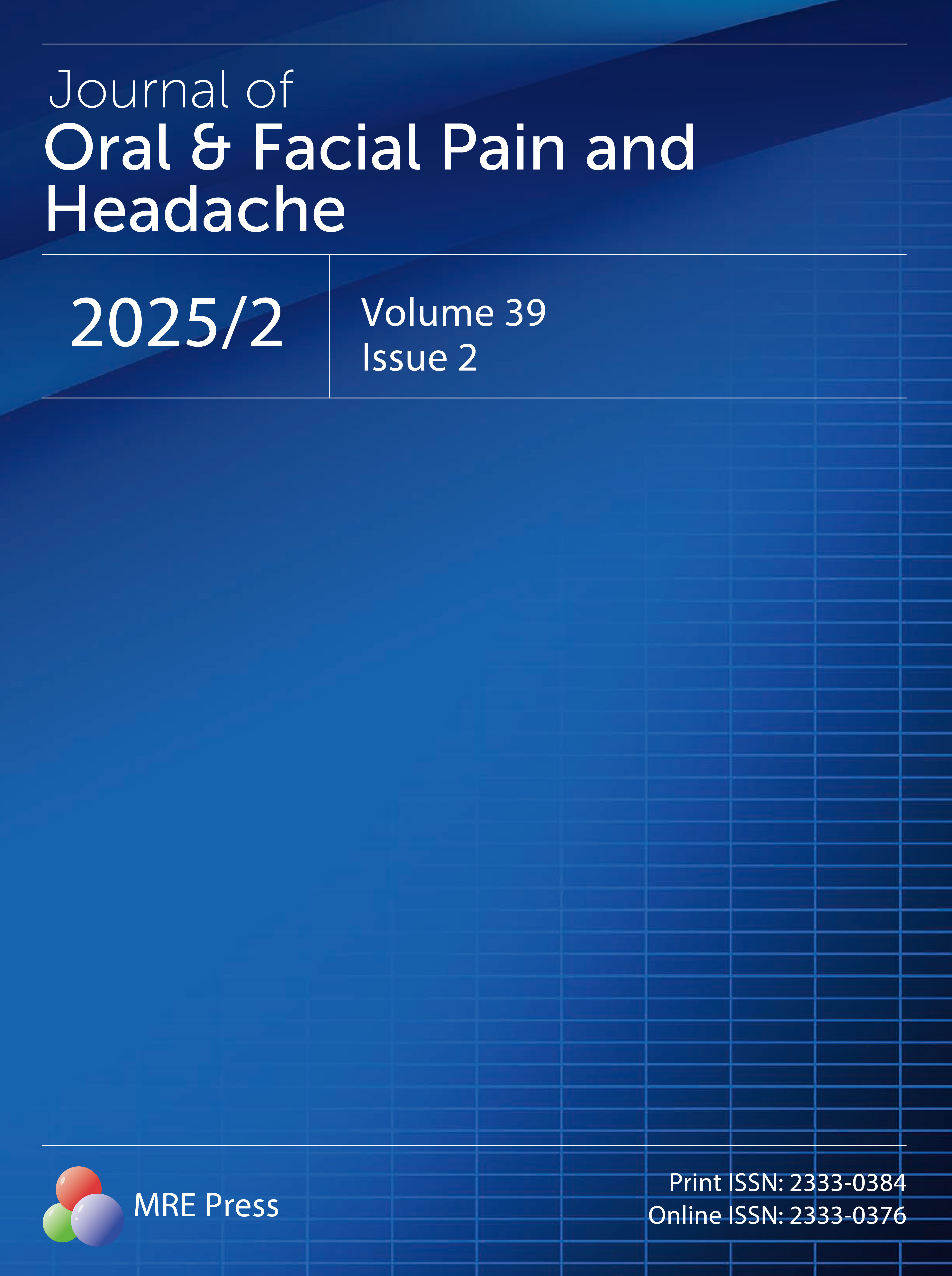Title
Author
DOI
Article Type
Special Issue
Volume
Issue
Article Menu
Export Article
More by Authors Links
Article Data
- Views 747
- Dowloads 48
Journal of Oral & Facial Pain and Headache (OFPH) is published by MRE Press from Volume 38 lssue 1 (2024). Previous articles were published by another publisher on a subscription basis, and they are hosted by MRE Press on www.jofph.com as a courtesy and upon agreement with Journal of Oral & Facial Pain and Headache.
Original Research
Open AccessPosttraumatic Gustatory Neuralgia: A Clinical Model of Trigeminal Neuropathic Pain
Posttraumatic Gustatory Neuralgia: A Clinical Model of Trigeminal Neuropathic Pain
1Department of Oral and Maxillofacial Surgery, Massachusetts General Hospital, Harvard School of Dental Medicine, New York, USA
2Department of Oral and Maxillofacial Surgery, Oolumbla-Presbyterian Medical Center, School of Dental and Oral Surgery, New York, USA
3Department of Oral and Maxillofacial Surgery, Harvard School of Dental Medicine, New York, USA
4Tufts/New England Medical Center, Pain Program, Boston, MA 02111 USA
5Geib Orofacial Pain Center, Tufts School of Dental Medicine, Boston, MA 02111 USA
6Headache Clinic, Tufts/New England Medical Center, Boston, MA USA
*Corresponding Author(s): Steven J. Scrivani E-mail:
Abstract
Six cases are reported in which the primary complaint was episodic, recurrent facial pain that was triggered by a taste stimulus. The pain first occurred days to weeks after head and neck surgery. Patients reported that a food stimulus placed in the mouth evoked episodic, electric shock-like pain in a preauricular location on the surgical side. The smell of food or, less reliably, emotional excitement could also trigger pain. Mandibular movement did not evoke the pain, and between lancinating attacks there was either no pain or only mild discomfort. Following an episode of pain, there was a refractory period during which the pain could not be elicited. Physical examination demonstrated a preauricular sensory loss of variable distribution. No abnormal sweating or vasomotor findings were clinically apparent. No odontogenic, muscular, salivary gland neurologic, or psychologic pathology was found to explain the clinical symptoms. The pain was not relieved with standard doses of anticonvulsants that are commonly used to treat trigeminal neuralgia. The duration of the recurrent pain symptoms in this group was 8 to 132 months without remission. Gustatory neuralgia. may be a discrete syndrome that results from abnormal interactions between salivary efferent fibers and trigeminal sensory afferent fibers in the injured auriculotemporal nerve. The unique features of the disorder make it a potentially useful clinical model for the investigation of autonomic/sensory interactions in neuropathic pain.
Keywords
gustatory neuralgia; trigeminal neuropathy; autonomic/sensory interaction; auriculotcmporal nerve
Cite and Share
Steven J. Scrivani, David A. Keith, Ronald Kumch, Noshir Mehta, Raymond J. Maciewicz. Posttraumatic Gustatory Neuralgia: A Clinical Model of Trigeminal Neuropathic Pain. Journal of Oral & Facial Pain and Headache. 1998. 12(4);287-292.
References

Abstracted / indexed in
Science Citation Index (SCI)
Science Citation Index Expanded (SCIE)
BIOSIS Previews
Scopus: CiteScore 3.1 (2024)
Cumulative Index to Nursing and Allied Health Literature (CINAHL)
Submission Turnaround Time
Top
